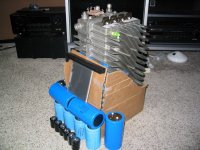Sometimes I take the cover and don’t make any adjustments - I just stare. Usually if I stare long enough, I’ll find something I could’ve done different or better. That’s how new projects are born at my house. 😀
It takes a long while staring for you to identify things to improve? I only have to think about the work done iot identify it should have been redone, let alone have a look inside

In fact, I have an agreement with him to take the J Zen to his shop for listening tests once it is up and running.
But beware, last persuasion in Scotland took a lot of whiskey and nagging. For 15s, I fear persuasion must be done with a combination of tools, including au naturél perhaps. Best find a suitable candidate for that
I believe, in past - you Viking guyz were pretty successful in that area ....
why not resorting to same resources, when speakers are in case?

I am all in if the result will be 15’s in the lineup. And making me first tester of course, only so that I can ship them to OPLDF, so that you can ship me your precious coaxials. You must be getting tired of them anywz 🙂
Back when the F5 was new, I asked Papa what configuration I should make my own F5 (dual output? rail V? gain/feedback?), and he suggested flogging an Adcom 5200 to figure some of that out. Over a decade later, now pointing a fan at that 5200 and getting over 20W in class A from it, and obviously making future plans for F5 turbo monblocs....!
Attachments
Pass DIY Addict
Joined 2000
Paid Member
In terms of running hotter that specified bias, I have a memory of Nelson making the statement that output transistors seem to sound better and better, right up to the point where they catch fire.
i tend to set bias according to sink temp, pushing bias up until I’m no longer comfortable with hotter temps. My big Aleph-X amps run at 9A bias on +/-22v rails.
i tend to set bias according to sink temp, pushing bias up until I’m no longer comfortable with hotter temps. My big Aleph-X amps run at 9A bias on +/-22v rails.
